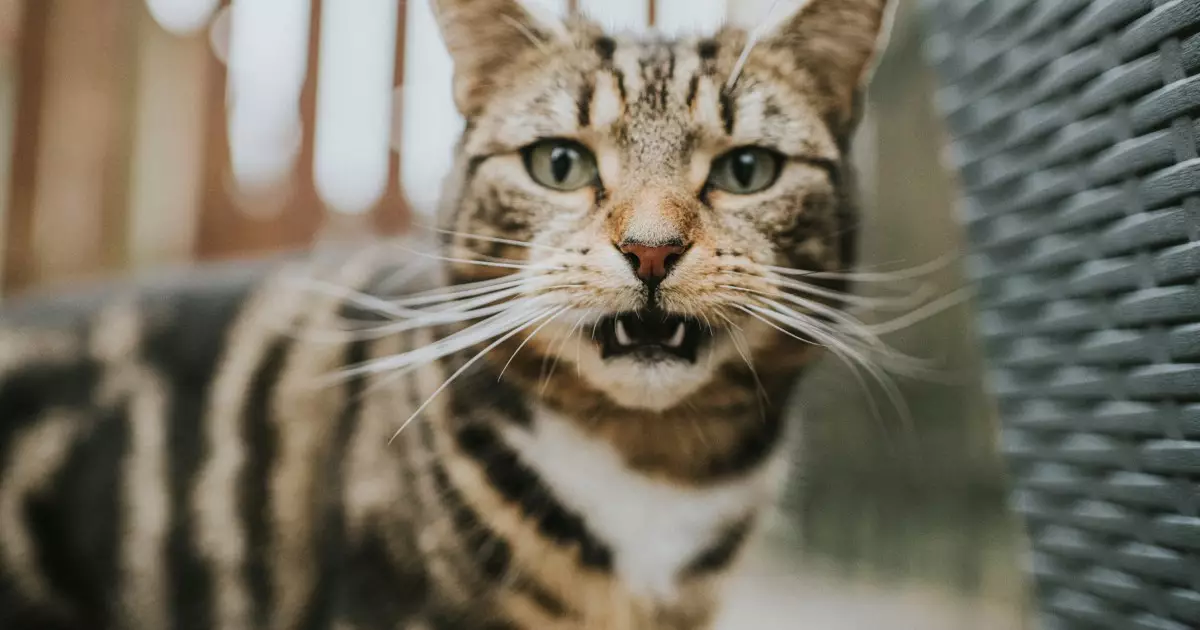For centuries, cats have often been mischaracterized as aloof and emotionally distant creatures. Their enigmatic demeanor stands in stark contrast to the exuberance displayed by dogs, leading many to believe that felines are less social and expressive. This notion, however, is becoming increasingly outdated as recent studies shed light on the rich emotional lives of cats. While commonly accepted ideas frame cats as solitary beings, research is beginning to illustrate that they possess a complex and nuanced method of communication, primarily through facial expressions.
A groundbreaking study published in the journal Behavioral Processes has revealed that cats can express themselves using as many as 276 distinct facial expressions. Conducted by Lauren Scott and her colleagues, the research took place in a cat café in Los Angeles, where 53 domestic shorthair cats were observed over the course of a year. This comprehensive study recorded nearly 200 minutes of interactions among the cats, shedding light on how they communicate not only with their fellow felines but also with humans.
The findings indicate that cats rely heavily on various subtle facial movements, contrasting sharply with our own expression mechanics. After all, while humans typically utilize about 44 facial gestures, and dogs manage 27, cats demonstrate an impressive variety of 26 distinct movements that lead to an astounding amount of 276 unique expressions. This revelation urges a re-evaluation of our perceptions about what constitutes feline expression and sends a clear message that there is far more happening beneath the surface than what pet owners often realize.
The diversity of feline expressions includes critical indicators of their emotions, primarily conveyed through ear positioning, whisker movements, and variations in blinking or licking. The research indicates that a significant proportion—45 percent—of these expressions are classified as friendly, suggesting that cats are more sociable and tolerant than previously thought. Conversely, 37 percent of the expressions were deemed aggressive, while the remaining 18 percent were categorized as ambiguous. These insights provide a clearer understanding of how nuanced and sophisticated cat communication truly is.
These findings carry significant implications for cat owners. Understanding that cats exhibit a plethora of expressions can deepen the bond between humans and their feline companions. It emphasizes the importance of paying attention to nonverbal signals, such as the orientation of a cat’s ears and the relaxation of their body language. Additionally, researchers have pointed out that recognizing friendly cues can enhance the experience of introducing new cats into a household or evaluating the behavioral dynamics of existing pets.
While this research offers illuminating insights into feline communication, it does not complete the puzzle of understanding cat emotions. The study’s authors recognize that more work is required to precisely decipher what each expression conveys. A complete emotional lexicon for cats remains elusive, and future research has the potential to explore this further.
For example, certain expressions can indicate friendliness and social engagement, evidenced by cats directing their ears and whiskers towards one another. In contrast, more hostile interactions are marked by retracted ears and constricted pupils. The variation between these physical cues underscores the complexity of emotions in cats and calls for a professional approach to their behavior.
The knowledge gained from this study could facilitate better interactions between cat owners and their pets, allowing for enriched understanding of their behaviors and moods. Moreover, there is potential for the development of technological tools—such as an app—that could help decode cat expressions in real-time, offering guidance to pet owners on how best to respond to their cats’ emotional needs.
As our understanding of cat behavior evolves, it challenges the outdated notion of cats as solitary, unemotional animals. Instead, we discover a tapestry of emotions and social interactions that characterize the feline experience. By embracing this newfound knowledge, we can forge stronger bonds with our pets and foster an environment in which our cats can thrive. Through continued research and awareness, we unveil the captivating world of feline communication, helping to appreciate these mysterious yet affectionate companions more profoundly.


Leave a Reply